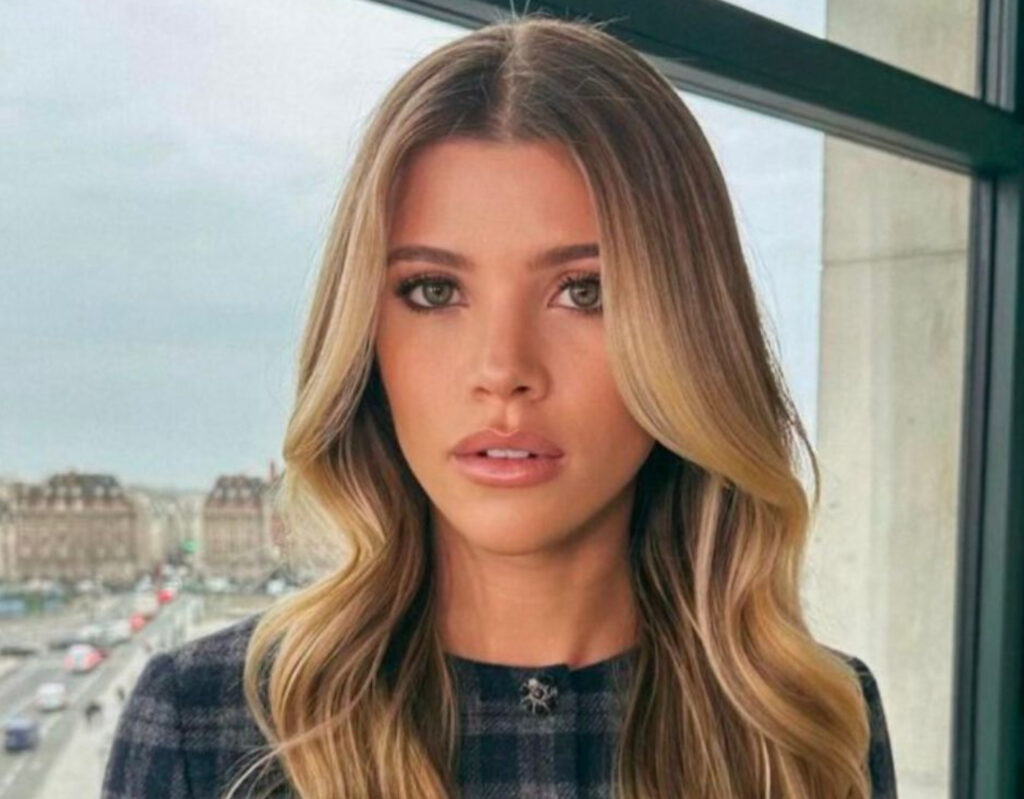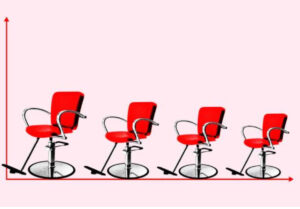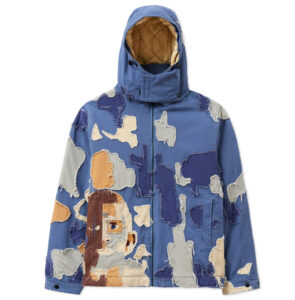The economy affects more than just the stock market and your savings account—it quietly reshapes our personal habits, priorities, and yes, even how we wear our hair. Just as hemlines have historically risen and fallen in sync with market trends—a phenomenon famously coined by economist George Taylor—another, subtler indicator has emerged in the wake of financial hardship: recession hair.
Longer, more natural, often untouched by salon hands, and decidedly less “styled,” recession hair is not a fashion trend but a cultural signal. It marks a shift in how individuals cope with the rising cost of living, job insecurity, and widespread financial anxiety. And unlike other economic indicators, this one plays out on street corners, in Zoom calls, at grocery stores, and across suburban cul-de-sacs.
Across the U.S., hairstylists, colorists, and salon owners are seeing more and more clients either stretching the time between visits or abandoning the salon entirely. Many are opting for at-home hair dye kits, DIY bang trims, and the long-lost art of “just letting it grow out.” And in this quietly evolving visual landscape, strands become signifiers of something deeper—of resilience, resourcefulness, and in some cases, reluctant surrender.
The Return of Natural: From Blonde Bobs to Greying Roots
Andrea McPadden, a Connecticut-based working mother in her mid-30s, was a platinum-blonde devotee for years. Maintaining her precise, chin-length bob required salon visits every three weeks and hundreds of dollars in upkeep—an investment she once justified as “part of the professional package.”
But that changed with the economic downturn. As the recession deepened, McPadden made a decision both financial and emotional: she would go natural.
“I was paying $60 every few weeks just to keep my roots from showing,” she said. “When things got tighter, I couldn’t justify that anymore—not when I had groceries and childcare to think about.”
She stopped coloring, grew her hair out, and began maintaining her style at home with the help of a $9 drugstore dye kit and a pair of shears. “Now, I do it myself,” she says. “It’s not as polished, but I’ve actually grown to like the simplicity. There’s something freeing about it.”
McPadden’s story is hardly unique. It’s a small, everyday act—trading foil highlights for box color—that reflects a much broader economic reality. In times of financial hardship, luxuries become liabilities, and appearance maintenance often tops the list of expendables.
The Salon Industry Feels the Strain
At Hair Attractions, a family salon in Monroe, Connecticut, owner Janine McIntyre has seen the changes up close. “We used to have a full book every weekend,” she says. “Now we get cancellations the day before, or clients call asking how they can ‘stretch’ their color a few more weeks.”
McIntyre calls it “recession hair”—not as a critique, but as an honest term for what’s happening. “Our clients are coming in with roots two inches long. They’re growing out their color, trimming just the ends, or skipping services altogether. And I get it. People are struggling. Hair is part of how they cut back.”
Some salons have responded with package deals and express services—“bang trims only” or “root touch-ups without blowouts”—but even those offerings are becoming hard to sell.
Nationally, the professional salon industry saw an estimated 12% dip in service revenue between 2008 and 2009, according to industry surveys at the time. That drop doesn’t just affect stylists—it hits product distributors, educators, and manufacturers, many of whom rely on regular salon purchases to stay afloat.
The Psychology of Hair in Economic Crisis
Why is hair such a sensitive site of response during financial crises?
For starters, hair is a deeply personal yet public expression of identity. It’s one of the few things we carry into every job interview, grocery trip, or family gathering. In good times, people might cut it for fun, dye it for flair, or visit a salon as a ritual of care and transformation. But in hard times, hair becomes a battleground between necessity and self-expression.
“Hair is often one of the first places we cut back on,” says Dr. Melissa Curran, a psychologist who specializes in behavioral economics. “It’s seen as non-essential, but also emotional. When people stop coloring their hair or delay trims, it’s not just about money—it’s about control. In a world where we can’t control the economy, we try to manage what we can: our routines, our spending, and yes, even our roots.”
There’s also a gendered aspect to the shift. For many women, professional grooming is tied to ideas of employability and credibility—a silent pressure that persists even when finances falter.
“I remember thinking, ‘Can I go to work like this? With grey hair?’” McPadden recalls. “But then I saw other women doing it too. We were all adjusting at once. And that made it easier.”
The Rise of DIY Hair Culture
The recession didn’t just curb salon visits—it revived a culture of DIY beauty that hadn’t been mainstream in decades.
Retailers like Walgreens and CVS reported an uptick in sales of at-home hair color kits, trimmers, and styling tools in late 2008 and early 2009. YouTube tutorials exploded with searches for “how to cut bangs,” “home root touch-up,” and “natural ways to blend grey.”
Even formerly loyal salon-goers found themselves becoming amateur colorists overnight.
“It was intimidating at first,” says Deena Rosales, a Brooklyn-based paralegal. “I’d never even used a flat iron before the recession. Now I can trim layers, bleach my ends, and even do balayage with a spoon.”
Brands noticed too. Garnier, L’Oréal, and Clairol began expanding their product lines to include root-specific kits, gentler developers, and gray-blending glosses—all marketed with a tone of affordability and empowerment. “You don’t have to sacrifice style,” one ad read. “Just change how you get there.”
This DIY wave wasn’t just about money—it was about self-sufficiency, a return to a kind of aesthetic resilience rooted in resourcefulness.
Cultural Shifts: What “Good Hair” Means During a Downturn
If the 2000s were about ultra-maintained beauty—Brazilian blowouts, platinum streaks, monthly cuts—the recession helped usher in a return to authenticity. Hair trends became looser, more lived-in. Shaggy cuts, grown-out roots, and natural textures became not just acceptable but fashionable.
Celebrities like Sarah Jessica Parker, Anne Hathaway, and even First Lady Michelle Obama began wearing longer, less processed styles. Greys, once a sign of neglect, became a symbol of quiet defiance—a visual refusal to spend what one couldn’t afford.
Even in high fashion, the trend trickled in. Fall 2009 runway shows featured undone ponytails, raw textures, and visible regrowth, signaling a shift from the polished gloss of years prior to something more grounded—more recession-ready.
Beyond 2009: A Pattern That Repeats
While the term “recession hair” emerged during the 2008–2009 financial crisis, it’s become a recurring phenomenon. During the COVID-19 pandemic, similar patterns reappeared: at-home haircuts, viral quarantine dye jobs, and a widespread embrace of grey and natural hair textures.
Economics and beauty are inextricably linked—not just in terms of what people can afford, but in how they express hope, adaptation, and identity during times of crisis.
As the economy recovered in the 2010s, salons rebounded too. But the lessons of recession hair stuck with many. “I used to think I couldn’t live without my stylist,” Rosales says. “Now I know I can. And I actually kind of like the way I look when I’m the one in control.”
The Quiet Power of the Haircut
Recession hair may not make headlines in financial papers, but it tells a human story: of struggle, sacrifice, reinvention, and community. It reminds us that even in the most personal corners of our lives, the economy leaves fingerprints—not just in our bank accounts, but in the mirror.
As Janine McIntyre says, “Hair doesn’t lie. It tells you who’s thriving, who’s coping, and who’s learning to do more with less.”
In uncertain times, that kind of honesty is rare—and oddly beautiful.
No comments yet.








